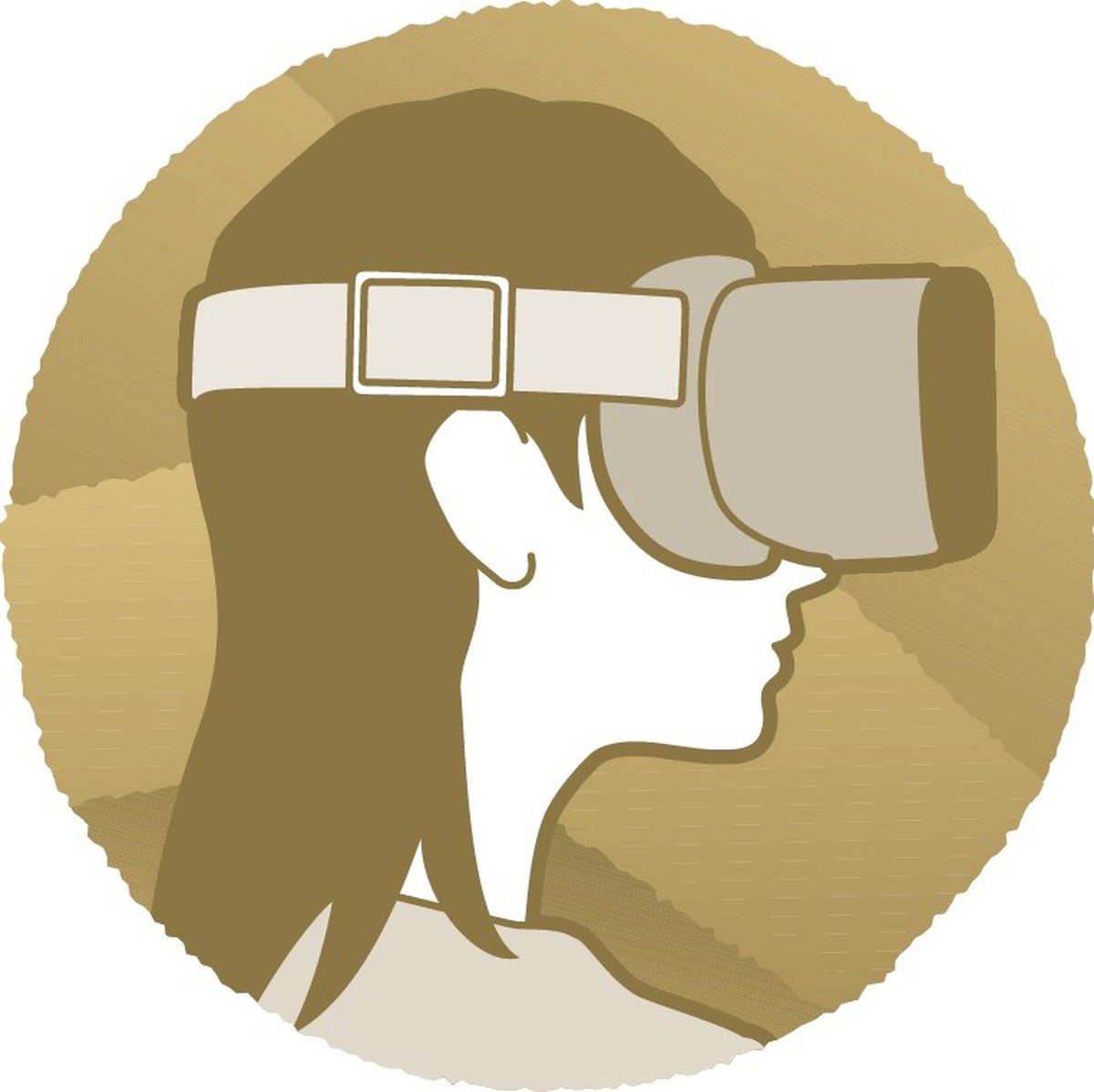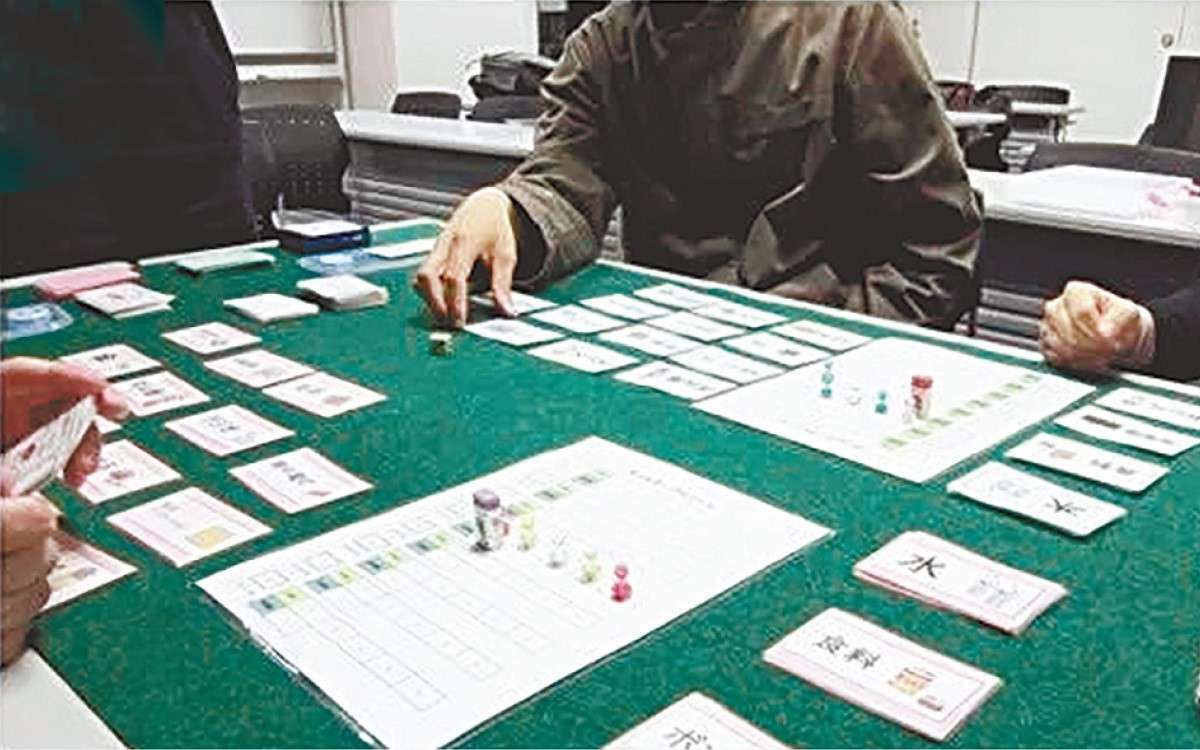Disaster preparedness / Digital Technologies Provide Realistic Disaster Experiences; Analog Methods Also Help Prepare for Floods, Earthquakes

Improving disaster preparedness by simulating experiences
10:00 JST, November 25, 2024
Digital technologies such as augmented reality (AR) and virtual reality (VR) can help visualize the risks of natural disasters such as floods and earthquakes. Experiencing simulated disasters through such technologies can help improve people’s ability to respond to the real thing.
Simulations highlight risks

VR can realistically reproduce various kinds of disaster situations with 3D images. AR, on the other hand, overlays computer-generated images of disaster scenes onto the real world so that people can easily visualize the disaster risks at their location. Some devices require goggles for the experience, while others can be viewed on smartphone or tablet screens.
In the torrential rains that hit western Japan in 2018, some residents in Hiroshima Prefecture and other areas were unable to evacuate on time and became victims of mudslides and other disasters.
Based on the experience, the Hiroshima prefectural government — in collaboration with Hiroshima University and Tokyo-based disaster prevention systems company Rikei Corp. — created VR-based materials to enlighten the residents of the risks of natural disasters.

Improving disaster preparedness by simulating experiences
“Hiroshima natural disaster experience VR” simulates how mudslides, flooding, earthquakes or tsunami occur in 360-degree computer graphics. It can be accessed on the prefecture’s website, where there are a total of 13 such VR videos.
“We want to encourage people to learn to recognize the risks and evacuate at an early stage,” an official in charge said.
Smartphone apps can visualize disaster risks at a person’s location. Weathernews Inc.’s AR app simulates flooding, and Tokio Marine & Nichido Fire Insurance Co.’s AR app simulates flooding and landslides. In Hiroshima Prefecture’s Kikimiru AR, landslide-prone areas are highlighted on a person’s smartphone. The risks in an area can be checked simply by scanning the area with the smartphone’s camera.
The Nagano prefectural government since late August has been lending out AR gear including goggles that display simulated flooding damage. Users can set the depth of the water, and the AR overlays camera footage with images of muddy currents and floating wood.
Analog methods

Disaster simulation card games can help develop imagination and judgment and are used at schools and welfare facilities. The lessons learned from the games can be applied at home.
An Aichi Prefecture-based nongovernmental organization created “Kizuki,” a disaster scenario card game designed to be played at senior citizen facilities.
Teams of three play against each other and are tasked with prioritizing a series of simultaneous events written on the cards — such as “Trapped in the toilet” and “Evacuees visit you” — and handling them using supply item cards.
Staff at Shinmeien, a special elderly nursing home in Hamura, Tokyo, sometimes play Kizuki with locals to deepen their relationships. “The game is also good for improving disaster management in the community,” Shinmeien’s director said.
The disaster response card game “Crossroad” was created in the wake of the 1995 Great Hanshin Earthquake. Participants answer questions about possible decisions such as “Do you evacuate late in the night?” and discuss why they chose their answer.
“Disaster response stories” are a form of writing in which an author imagines a future disaster and writes a story in which the writer is the main character. The literary activity has been spread in schools in Kochi and Miyazaki prefectures, which are expected to be significantly impacted by the Nankai Trough Earthquake. Students set a date and time of a disaster and write about their own feelings and actions and those of their family, as well as the state of their town, in 800 to 1,200 Japanese characters.
Satoko Oki, an associate professor at Keio University who promotes disaster prevention novels, said the activity helps writers “think of disasters as an issue that affects them, to think further about how they and their loved ones can survive, and to be effectively prepared for a disaster.”
- Disaster scenario card game“Kizuki”
- – Welfare facility staff play a disaster scenario card game as a team and cultivate disaster preparedness by prioritizing tasks for evacuation

- Disaster response story
- – The writer becomes the protagonist and creates a story about how they cope with a future megaquake
- – The scenario should end on a promising note

- How to make use of experiences
- – Reflect on points of concern and discuss preventative measures with family
- – Stockpile necessary items and perform actions to protect your life
- – Check hazard maps for your neighborhood and understand risks
- – Evacuate at an early stage and take appropriate actions based on the disaster, such as moving to upper floors
- – Create an evacuation action plan for residents or welfare facilities
Use experience to create plans

Tokyo-based general incorporated association AR Bosei (ARB) provides an AR and VR workshop for disaster prevention drills at schools and in local communities.
ARB Director Akihiro Itamiya said the workshop can be safely experienced in familiar places at any time. “It can be a way to practice proper evacuation procedures,” he said, adding that the use of such technologies will motivate people to participate in disaster drills.
At an AR-based disaster simulation drill held in a classroom or gymnasium, participants view realistic CG images of flooding while wearing goggles. Objects are scattered about to serve as obstacles, and participants wearing the goggles walk through the room carefully while swinging an umbrella to detect any objects in their way. They also crouch down to simulate avoiding inhaling smoke that gradually descends from the top of the room during a fire as they make their way to the exit.
“It is important to make use of insights gained from such simulated experiences and take action to protect your lives, such as by taking shelter and other safety measures before a disaster occurs,” said Masahiro Kaibori, head of the Hiroshima University Resilience Research Center.
It is important for people to reflect on such experiences with their family, discussing what they felt concerned about and then creating their own evacuation plan. It is good to move furniture to somewhere safer and to secure an evacuation route in case of earthquakes and flooding, while checking the disaster history of your location and finding evacuation routes on a hazard map.
***
Optical cables have great potential to be used as seismometers

Takashi Tonegawa talks about a plan to realize the observation of tsunami using optical cables, at the Japan Agency for Marine-Earth Science and Technology in Yokosuka, Kanagawa Prefecture.
Optical cables are essential for people’s daily lives as a foundation of high-speed telecommunications, and in recent years more research is being done to utilize such cables as seismometers.
Although much time is still needed to put the plan into practical use, researchers of disaster prevention measures are keenly paying attention to the research as a revolutionary method to observe ground movements.
The technology, developed from this research, is called Distributed Acoustic Sensing (DAS). Optical cables are laid underground or on the seabed like a web and connected to observation devices exclusive for the purpose. It can be learned which part of the cables, which can stretch up to 100 kilometers, is shaken and to what extent.
It would be possible to build a seismic observation network on a huge scale by utilizing existing telecommunications infrastructure.
I started my research on DAS two years ago. I was surprised to learn that the technology had been used for a wide range of purposes, such as detecting intruders, monitoring traffic conditions and checking aging infrastructure, by using its feature that can detect even a tiny tremor.
In June, the outcome of a new study was announced that suggests further possibilities regarding the technology.
A team of researchers of the Japan Agency for Marine-Earth Science and Technology succeeded in observing tsunami that occurred on the sea near Torishima Island of the Izu island chain in October last year by using undersea cables off Kochi Prefecture.
When tsunami change the height of waves on the sea surface, the water pressure and geographical shapes on the seabed also change. Thus, the positions of the cables were also distorted.
Takashi Tonegawa, who is on the research team, said it was the first time that DAS caught details of tsunami reaching faraway places.
On the Pacific side of Japan, parts of which were devastated by the 2011 Great East Japan Earthquake and others that are susceptible to being damaged by a Nankai Trough earthquake in the near future, the building of networks to observe tsunami has been progressing.
However, such preparations have not progressed much on the Sea of Japan side, where the Noto Peninsula Earthquake occurred and caused severe damage.
“We want to observe the real-time movements of tsunami across the nation,” Tonegawa said. “We want to perform studies that can contribute to the transmission of quicker and more precise emergency warnings.”
A hurdle to clear is that the current technology cannot use optical cables utilized for telecommunications for DAS and, therefore, cables exclusively for observation are necessary.
Although it will be an uphill battle to realize the plan, I sincerely hope that the research will progress further because the technology has the potential to save many people’s lives.
"JN Specialities" POPULAR ARTICLE
-

The Japan News / Weekly Edition (12/12-12/18)
-

English-language Kabuki, Kyogen Entertain Audiences in Tokyo; Portland State University Professor Emeritus, Graduates Perform
-

Noodle Dining Shunsai / Rich Oyster Ramen to Savor at Odasaga; Experienced 68-year-old Owner Creates Numerous Ramen Varieties
-

The Japan News / Weekly Edition (12/5-12/11)
-

People Keep Loved Ones’ Ashes Close in Special Jewelry, Small Urns as Unique Way to Memorialize Them
JN ACCESS RANKING
-

Keidanren Chairman Yoshinobu Tsutsui Visits Kashiwazaki-Kariwa Nuclear Power Plant; Inspects New Emergency Safety System
-

Imports of Rare Earths from China Facing Delays, May Be Caused by Deterioration of Japan-China Relations
-

University of Tokyo Professor Discusses Japanese Economic Security in Interview Ahead of Forum
-

Japan Pulls out of Vietnam Nuclear Project, Complicating Hanoi’s Power Plans
-

Govt Aims to Expand NISA Program Lineup, Abolish Age Restriction

























